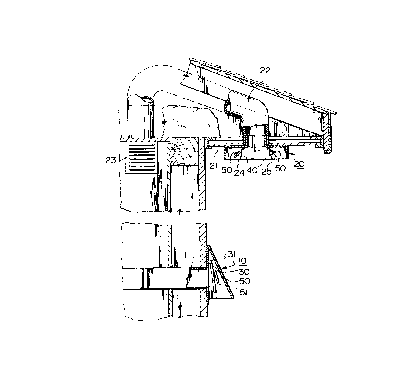Some of the information on this Web page has been provided by external sources. The Government of Canada is not responsible for the accuracy, reliability or currency of the information supplied by external sources. Users wishing to rely upon this information should consult directly with the source of the information. Content provided by external sources is not subject to official languages, privacy and accessibility requirements.
Any discrepancies in the text and image of the Claims and Abstract are due to differing posting times. Text of the Claims and Abstract are posted:
| (12) Patent: | (11) CA 2199754 |
|---|---|
| (54) English Title: | FREEZE-FREE VENT |
| (54) French Title: | EVENT PROTEGE DU GEL |
| Status: | Term Expired - Post Grant Beyond Limit |
| (51) International Patent Classification (IPC): |
|
|---|---|
| (72) Inventors : |
|
| (73) Owners : |
|
| (71) Applicants : |
|
| (74) Agent: | PERLEY-ROBERTSON, HILL & MCDOUGALL LLP |
| (74) Associate agent: | |
| (45) Issued: | 2001-01-30 |
| (22) Filed Date: | 1997-03-12 |
| (41) Open to Public Inspection: | 1998-02-02 |
| Examination requested: | 2000-03-09 |
| Availability of licence: | N/A |
| Dedicated to the Public: | N/A |
| (25) Language of filing: | English |
| Patent Cooperation Treaty (PCT): | No |
|---|
| (30) Application Priority Data: | ||||||
|---|---|---|---|---|---|---|
|
A flap valve vent hood for discharging air to
atmosphere from clothes dryers and bathroom vents is
provided freeze-free by a secondary valve that is mounted
on the principal flap valve and covering an open area that
provides a secondary air flow path through the principal
flap valve. The principal flap valve and the secondary
valve are normally closed and the principal flap valve is
biased to its closed position by gravity. A lip along an
edge of the open area may be provided to minimize
accumulation of moisture where the two valves are in
contact with one another. A soffit vent hood of particular
construction is provided in which there are two members
detachably interconnected one being a downwardly directed
hood and the other an insert therefor which carries the
valves for respective ones of a pair of outlet discharge
openings.
Un capuchon d'évent à clapet pour évacuer dans l'atmosphère l'air des sécheuses et des évents de salle de bain est protégé du gel par un clapet secondaire monté sur le clapet principal et couvrant une ouverture qui offre un trajet secondaire d'écoulement de l'air à travers le clapet principal. Le clapet principal et le clapet secondaire sont normalement fermés et le clapet principal est amené à sa position fermée par gravité. On peut poser une lèvre en bordure de l'ouverture pour réduire l'accumulation d'humidité là où les deux clapets sont en contact l'un avec l'autre. L'invention prévoit un capuchon d'évent de soffite de construction spéciale comprenant deux éléments assemblés de façon détachable, l'un étant un capuchon tourné vers le bas et l'autre un élément rapporté porteur des clapets pour les sorties respectives d'une paire d'ouvertures d'évacuation.
Note: Claims are shown in the official language in which they were submitted.
Note: Descriptions are shown in the official language in which they were submitted.

2024-08-01:As part of the Next Generation Patents (NGP) transition, the Canadian Patents Database (CPD) now contains a more detailed Event History, which replicates the Event Log of our new back-office solution.
Please note that "Inactive:" events refers to events no longer in use in our new back-office solution.
For a clearer understanding of the status of the application/patent presented on this page, the site Disclaimer , as well as the definitions for Patent , Event History , Maintenance Fee and Payment History should be consulted.
| Description | Date |
|---|---|
| Inactive: Expired (new Act pat) | 2017-03-12 |
| Small Entity Declaration Determined Compliant | 2008-01-25 |
| Small Entity Declaration Request Received | 2008-01-25 |
| Inactive: IPC from MCD | 2006-03-12 |
| Inactive: IPC from MCD | 2006-03-12 |
| Inactive: IPC from MCD | 2006-03-12 |
| Grant by Issuance | 2001-01-30 |
| Inactive: Cover page published | 2001-01-29 |
| Pre-grant | 2000-10-18 |
| Inactive: Final fee received | 2000-10-18 |
| Notice of Allowance is Issued | 2000-09-05 |
| Notice of Allowance is Issued | 2000-09-05 |
| Letter Sent | 2000-09-05 |
| Inactive: Approved for allowance (AFA) | 2000-08-11 |
| Amendment Received - Voluntary Amendment | 2000-06-06 |
| Letter Sent | 2000-03-28 |
| Inactive: Entity size changed | 2000-03-15 |
| All Requirements for Examination Determined Compliant | 2000-03-09 |
| Request for Examination Requirements Determined Compliant | 2000-03-09 |
| Request for Examination Received | 2000-03-09 |
| Application Published (Open to Public Inspection) | 1998-02-02 |
| Inactive: IPC assigned | 1997-07-29 |
| Inactive: IPC assigned | 1997-07-29 |
| Inactive: First IPC assigned | 1997-07-29 |
| Inactive: Applicant deleted | 1997-07-17 |
| Inactive: Inventor deleted | 1997-07-17 |
There is no abandonment history.
The last payment was received on 2000-03-09
Note : If the full payment has not been received on or before the date indicated, a further fee may be required which may be one of the following
Patent fees are adjusted on the 1st of January every year. The amounts above are the current amounts if received by December 31 of the current year.
Please refer to the CIPO
Patent Fees
web page to see all current fee amounts.
Note: Records showing the ownership history in alphabetical order.
| Current Owners on Record |
|---|
| 3186199 CANADA LIMITED |
| Past Owners on Record |
|---|
| JOHN R. DAVIES |
| LUC M. LACHAPELLE |